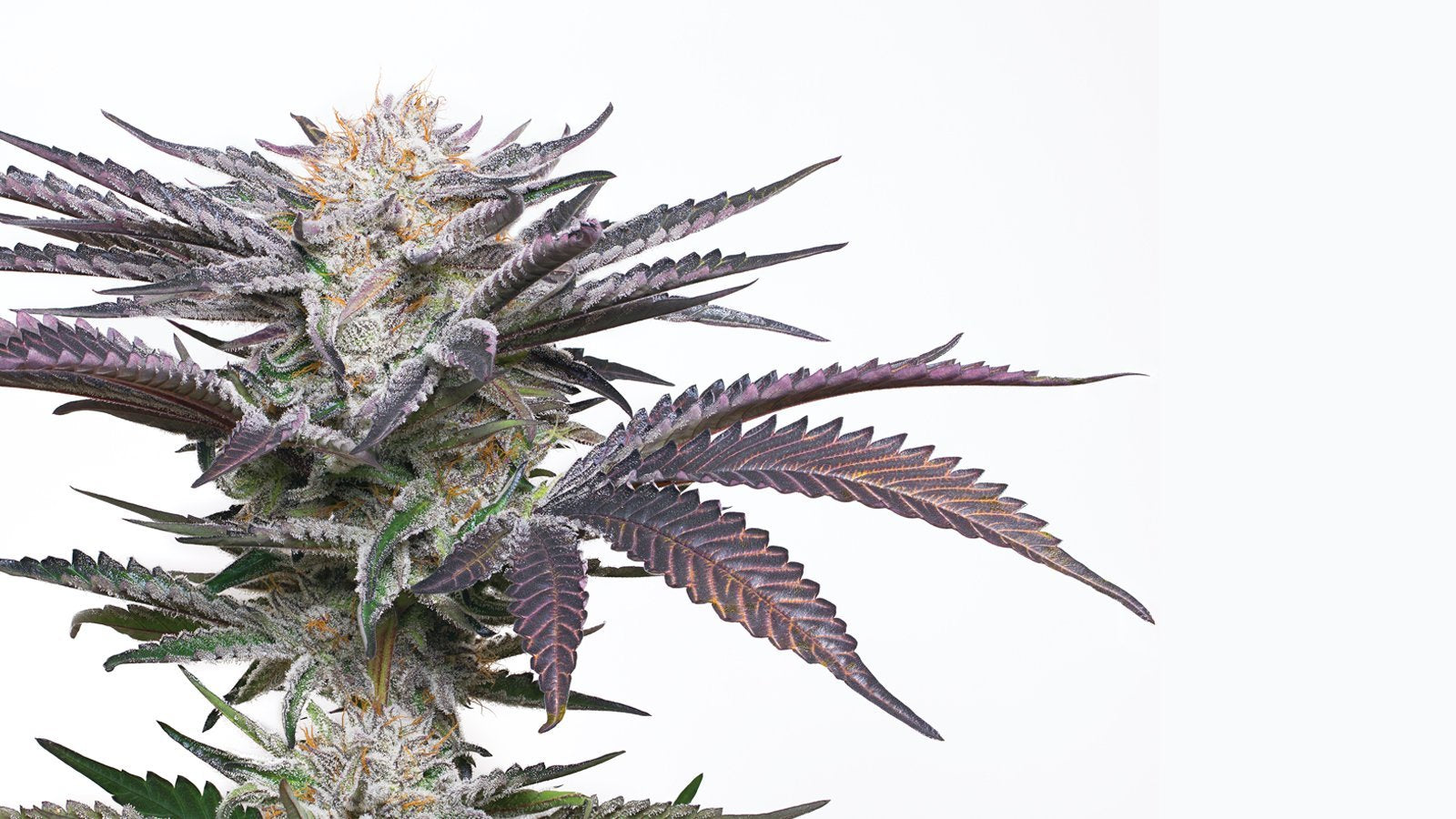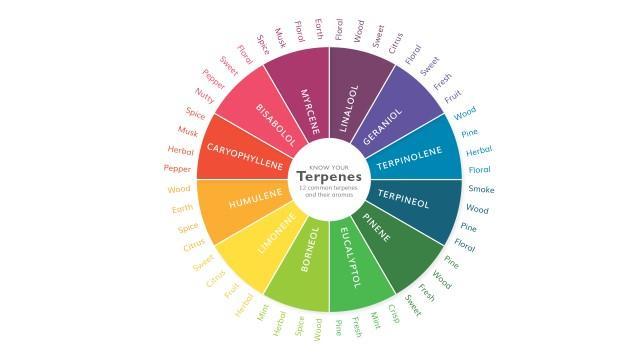

The nose knows: get to know cannabis terpenes
Highlights:
- Terpenes are aromatic chemical compounds found in many plants, including cannabis.
- The type and concentration of different terpenes in cannabis can have a marked effect on our experience.
- Terpenes are thought to interact with THC and CBD to enhance the overall effect of cannabis.
There’s no doubt about it: the smell of a freshly opened package of dried cannabis flower is recognizable and unique. These aromas come from terpenes, a class of naturally occurring, highly aromatic chemical compounds found in many plants, including cannabis. Each terpene has particular properties that may be familiar to you, from the woody scent of pinene, to the citrusy smell of limonene, and the lavender-like aroma of linalool.
Why do plants have terpenes?
Not just for human use, the actual biological purpose of terpene production is to deter pests, and to attract pollinators and predators that attack plant parasites. Terpenes in cannabis are produced in the trichomes, the same resinous glands that produce cannabinoids such as tetrahydrocannabinol (THC) and cannabidiol (CBD). Terpenes have been found to interact with cannabinoids in what is called the “entourage effect”, the theory that compounds work with one another to modulate (and sometimes enhance) the effects of one another.
How many terpenes are found in cannabis?
There are more than 200 terpenes that exist in small but powerful quantities in cannabis. Even a small percentage by weight can have a substantial result on not only the plant’s smell, but on its potential effects.
How can terpenes help me select a product?
The nose knows. The next time you smell a fresh bud of dried cannabis, see what your body does. If it naturally recoils, then your body is telling you it doesn’t like it, which may lead to a less-than-satisfactory experience. If the smell gives you pleasure, you may be more likely to enjoy the potential effects of that strain.
Terpenes commonly found in cannabis
BC Cannabis Stores has identified a dozen different terpenes that are common in cannabis.
Bisabolol is a delicate, floral, peppery and nutty-smelling terpene found naturally in the bark of the candeia tree, and in chamomile. It has historically been used in the cosmetic and fragrance industries, and is thought to have anti-inflammatory, antioxidant and antiseptic qualities.
With its minty, spicy and cooling notes, borneol is found in a number of aromatic herbs including rosemary, mint, ginger, mugwort, tarragon, camphor, and wormwood. It is thought to act as an antibacterial, antifungal, anti-inflammatory, and antioxidant.
Caryophyllene is common in basil, oregano, hops and rosemary, and in spices such as cloves, caraway, black pepper, and cinnamon. It commonly presents notes of spice and pepper, and is the only terpene that has been known to interact with receptors in the endocannabinoid system.
Eucalyptol (or cineol) presents as a cooling, minty aroma, and is found naturally in bay leaves, tea trees, and eucalyptus trees. Research into its antibacterial, anti-inflammatory, and antifungal benefits are ongoing.
Geraniol is naturally produced in geranium flowers, tobacco, and lemons. Its floral, waxy, and fruity aromatics are similar to citronella. Geraniol is known for its antioxidant, antiviral, and antifungal properties. Powerful on its own, its presence is also thought to increase the effects of other terpenes.
Humulene is found in hops, coriander, cloves, and basil, among other plants. Its aroma presents as woodsy and earthy with citrus overtones. Humulene is thought to have anti-inflammatory and antibacterial properties.
Limonene is found in citrus rinds, juniper, peppermint, cannabis and rosemary, and its aroma boasts notes of lemon and orange. Limonene is the second-most common terpene in nature, and research indicates that it may have properties as an antifungal, antimicrobial, and antacid. Limonene is an active ingredient in the essential oils of many citrus fruits and is a common food flavouring agent and ingredient in household cleaners and air fresheners.
Linalool is present in lavender, laurel, mint, birch trees, and rosewood. Thought to provide a calming and sometimes sedating effect, linalool is often present in essential oils and aromatherapy products that aim to promote relaxation.
Myrcene is found in high quantities in mangoes and wild thyme, as well as hops, lemongrass, bay leaves, and citrus fruits. With an earthy and musky scent, myrcene has been thought to offer relaxing and calming benefits. Myrcene is also the most common terpene in cannabis, and is often found in larger quantities in indica-dominant strains. Research suggests it may have possible anti-inflammatory and antibacterial benefits.
Not surprisingly, aptly named pinene is found in pine needles as well as orange peels, parsley, dill, and sage, among other plants. It is also the most common terpene in the world. It delivers trademark scents of fresh pine and sweet wood and is also a noted energy booster, with anti-inflammatory and antibacterial properties.
Responsible for some of the flavours of the famous lapsang souchong tea, terpineol is a terpene that is also found in pine trees, lilac trees, cannabis, eucalyptus leaves, sap, and lime blossoms. With its signature piney and smoky smell, terpineol is believed to provide sedative effects along with antibiotic, antioxidant, and anti-inflammatory properties.
Terpinolene is a piney, floral and herbal scented terpene that is found in nutmeg, tea tree, conifers, apples, cumin, and lilac trees. Thought to have relaxing effects, it may also deliver antioxidant, antibacterial, and antifungal benefits.
Each of our dried flower products feature a terpene profile that may help you select the right strain for your intention.


